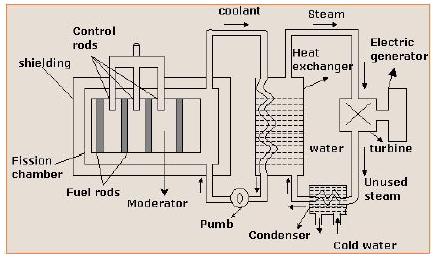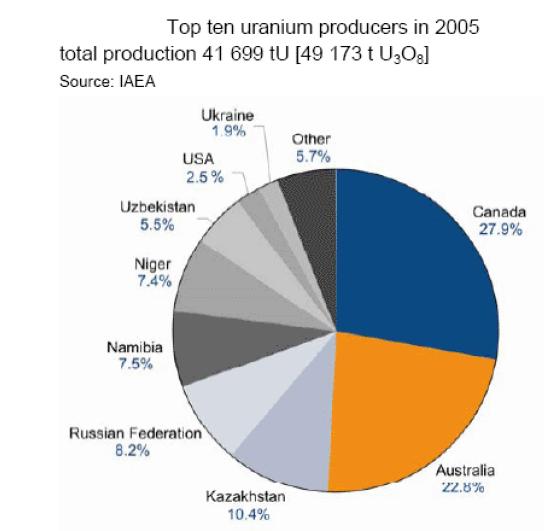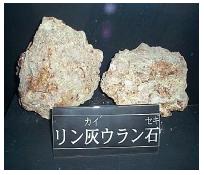Technical Paper Title: NUCLEAR ENERGY
Authors: MARIA MASOOD, 2nd BTech, EEE
College: SHADAN WOMEN’S COLLEGE OF ENGINEERING AND TECHNOLOGY.
INTRODUCTION:
The manufacturing of the first nuclear reactor dates back to as long as the year, 1944. The Experimental Breeder Reactor I at the Idaho National Laboratory near Arco, Idaho became the first nuclear reactor to create electricity and later became the first in the world to have all it’s electricity come from Nuclear Power Plants.
Even now in countries like France, about 77% of the elctricity is facilitated through nuclear plants. Lithuana ranks second with 65%. In it’s initial stages, it became extremely popular because it was found to be a very, very good succession to the Thermal Power plants.
Some reasons are:
->Very less amount of fuel is required
Powder of enriched Uranium used to power a nuclear submarine is approximately equal to a
million gallons of Gasoline.
->No threat of the extinction of the fuel in the near future.
->Low emission of harmful products in Air
->It does not cause air pollution, as no CO2 gas is liberated in this process.
(Fossil Fuel produce about 2 billion metric of Co2 per year.)
->It does not need Oxygen for Combustion.
Initially, the thought of creating electricity with the help of Uranium seemed like a very good idea and Therefore, became very popular. Records show that in less that 30 years since the first nuclear reactor was established, more than 100 new power plants were set up all around the world. But when the matter of the decomposition of the byproducts of Uranium came into the limelight, the popularity of it seemed to have deteriorated drastically. So, inspite of all the the remarkably good features,what is the reason behind it? To answer this, one must have a closer look at how and why fissionable materials like Uranium find their use in a nuclear reactor.
MAIN PURPOSE:
Due to rearrangement of particles in a nucleus, energy is emitted.
This energy is used to heat water to produce pressurised steam, which drives the turbine.
THE FUEL USED:
The primary fuel used for this purpose is Uranium.
The fissionable material here is U235. Depending upon the availability of the material, natural or enriched Uranium maybe used.
In Britain, lots of natural Uranium is available and therefore, most reactors use it as it is. But in United States of America, Enriched Uranium is used.
WHY URANIUM IS SPECIAL:
Uranium is special because it decays naturally(by alpha radiation), and it splits up immediately after a foreign neutron enters it. 1.2 Kg of Uranium has the tendency to produce about 1MW power for one year.
THE PHENOMENA:
When an external neutron enters a fissionable material, it becomes unstable and splits up giving out
fission products and neutrons. In the process, heat energy is emitted.
(First discovered by Fritz Strassman in 1838, in Berlin, Otto Hahn).
This happens very fast and the time taken is about 1 x (10 power -2) seconds
About 85% of energy in a reactor is released at this stage.
THE PROBLEM:
The problem with the nuclear reactor does not lie in it’s operation, but is realized at the time of disposal of the fuel used. The prominent concern in case of nuclear power generation is ‘Radiation’.
Uranium undergoes spontaneous emission very slowly and that’s why it emits radiation. These radiations are very, very dangerous to human kind and exposure to it may prove to be fatal.
Though Uranium decays naturally, it takes thousands (infact, millions) of years for it to disintegrate completely.
The rate of disintegration of a radioactive nuclei is proportional to the number of radioactive nuclei present at any instant of time. (dN/dT = -kN)
(Half Life of U-238 is about 4.55 x (10 power 7) years)
The problem here is that all the nuclear waste gets accumulated and cannot be cleaned away.
A single nuclear plant produces about 20 metric tons of wastage which are the high level radio active wastage, which makes an annual production of 200 metric ton. Adding to it are the low level radio active wastage in the form of radiated parts and equipments. This means that once the reactor is set up and is started to operate, one cannot go in to fix it.
If the reactor is poorly designed or improperly operated, it may turn out to be disastrous. Like the extremely popular “Chernobyl Disaster”.
Chernobyl Disaster (1986) :
In the year, 1986, the Ukranian nuclear reactor exploded spewing 50 tons of radioactive material into the surrounding area, contaminating millions of area of forest. Atleast 30,000 people had to evacuated and thousands of people died.
IS THERE A WAY OUT?
One must keep in mind that this was the worst case scenario. Later, it was found that the Ukrainian nuclear reactor was poorly designed and improperly operated. Therefore, it does not imply that the concept of generating power with the help of nuclear energy should be abandoned completely. If one looks closely, one will find out why.
What we need is an Increased vigilance in all operations dealing with radioactive materials – the safety precautions should be strengthened.
At the occurrence of an accident, an Emergency cooling system ensures there is enough cooling water to cool the reactor. It must be noted here that the case of the ‘ Three Mile Island’ disaster was found to have been caused by the failure to supply coolant to the core. Although the core was completely destroyed, the radioactive mass never penetrated the steel outlining the containment structure. Several feet of special concrete, a standard precaution, was capable of preventing leakage for several hours, giving operators enough time to fix the flooding system of the reactor core.
As mentioned earlier, the prominent concern in case of nuclear power generation is Radiation. But Nuclear power plants( precisely, those set up in India) claim that measures have been taken that the release of radiation to public domain is within permissible limit prescribed by the ICRF and AERB. The Off-site Emergency Preparedness Plan ensures safety for an area upto 16km radius to meet the rarest and the most unlikely event of an accident beyond the design basis. Moreover, it has been found that a properly functioning nuclear power plants releases less radioactivity than the coal fired plant(source: Hvistendahl). Coals also contain radioactive material.
A coal power plant emits more radiation into air than a nuclear power plant. For the same power generation, the required fuel and wastes from the thermal station are several orders of magnitude greater for the coal fired station. In the vicinity of coal based power stations, there is
significant change in the PH value of rain water resulting in frequent acid rains in the area. Nuclear power stations do not release any toxic gases, require relatively small areas for their installation and involve transportation of minimal quantities of fuel. It is to point out here that
radioactivity is nothing new to the environment. It has always been present in nature to different degrees. The earth’s crust contains elements such as Uranium and Thorium which are radioactive and more importantly, have a long chain of radioactive daughter products. The earth is continuously being exposed to cosmic rays which are ionising radiation. In comparison to this
natural background radiation, the nuclear power plant contributes to a very insignificant amount of 5 percent. In case of a decommisioning of a nuclear power, a three stage program has been proposed by the International Atomic Energy Agency (source:http://www.igcar.ernet.in/nuclear/):
1. Storage with Surveillance:
This involves removal of all irradiated fuel, coolant and other easily accessible radioactive materials, leaving reactor vessel, structure and ventilation system intact inside the containment building, under surveillance and control. This takes about 2 years.
2.Restricted Site Release:
The radioactive reactor vessel and components are sealed off (entombed) for a dormant period of about 30 years for radioactivity to decay.
Non-active areas are released for other uses.
3.Unrestricted Site Release:
Major work of dismantling reactor vessel and piping is done with specialized remote handling techniques. The debris are then taken away for permanent storage in steel lined shallow land repositories, at the location duly approved by the Regulatory Body.The remaining areas of the plant are decontaminated and released for unrestricted occupancy i.e. green field conditions. This takes about five years.
Therefore, we need to understand that Nuclear power stations cannot explode like the atomic bombs do. In atomic bombs, the concntration of U235 is more than 90% which enables maximum production of energy in minumum amount of time. But here, U238 is in excess, which slows things down. If the reactor gets too hot, the control rods are lowered in and it cools down. If that does not work, then there are sets of emergency control rods(safety rods) that automatically drop in and shut the reactor down completely. (As required in times of Earthquakes).
In addition to all of those, a nuclear reactor needs experts,who have excess knowledge in the field , to carry on it’s operations. The workers must be educated about the safety concerns.
CONCLUSION:
If proper safety precautions are assured then we do not need to desolate the concept of producing energy through fissionable fuels, as the advantages clearly outweigh the risks involved.
Again, it is very important to remember that the risks that terrorize the society in case of nuclear power plants are only the worst case scenario.
In comparison to the thermal power plants which ‘inevitably’ produce a tremendous amount of CO2 and other poisonous gases in the atmosphere which contributes majorly to the air pollution, the nuclear power generation may not lead to any significant harm at all !
Generation of power through the atom is safe, compact and even environmentally clean. It can be carried out easily for atleast about 25 years.
(The average life of a nuclear reactor is about 25 years, but it maybe extended too).
The discovery of the generation of energy through nuclear fission is a boon, provided our concerns regarding the safety are assured.
REFERENCES
1. Electrical Power system, by C.L Wadhwa.
2. How nuclear power works, by Marshall Brian and Robert lamp
3. History Channel (Documentary)
4. Nuclear Energy Institute (N.E.I)
5. www.wikipedia.com
6. http://member.tripod.com
7. www.igcar.ernet.in
8. www.archive.greenpeace.org
9. www.howstuffwork.com
10. www.answers.com
11. Coal ash is more Radio Active than Nuclear waste, by Mara Hvistendahl
12. History and success of Argonne National Laboratory : part1
13. U.S department of Energy, Argonne National Lab.
14. Health concerns about Military use of depleted Uranium
15. “Inside Chernobyl”, National Geographic Channel
16. Power Systems, by V.K. Mehta




